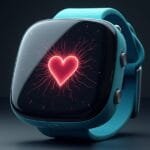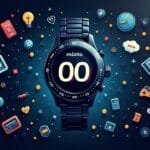Innovative Wearables Revolutionizing Your Daily Routine: Next-Level Gadgets for Optimal Wellness and Enhanced Productivity in 2025
Are You Ready for the Wearable Revolution: Will Your Next Fitness Tracker Be a Brain-Computer Interface? As we strive for the best wearables sports fitness goals in 2025, innovative gadgets are transforming our daily routines with cutting-edge tech. In this article, we’ll explore top-notch wearables that help achieve optimal wellness and productivity by comparing key features and benefits.
Introduction to Wearable Technology
The wearable technology industry has witnessed unprecedented growth in recent years, driven by the increasing demand for fitness trackers and smartwatches. According to a report by IDC, the global wearable device market will reach 529 million units in 2025, with a compound annual growth rate (CAGR) of 17.6% from 2020 to 2025.
Top Wearable Devices for Fitness and Productivity
The following are some of the top wearable devices that can help you achieve your best wearables sports fitness goals:
- Xiaomi Mi Band 7: A budget-friendly smart band with advanced health monitoring features, including heart rate monitoring, sleep tracking, and guided breathing sessions.
- Polar M430: A GPS-enabled running watch that tracks your performance metrics, including pace, distance, and calories burned, providing valuable insights for improving your running technique.
- Fitbit Ionic: A smartwatch designed for athletes, featuring advanced health monitoring features, music storage, and mobile payment capabilities.
Brain-Computer Interfaces (BCIs): The Future of Wearable Technology
BCIs are a new frontier in wearable technology, allowing users to control devices with their thoughts. This technology has the potential to revolutionize the way we interact with our surroundings and could have significant implications for people with disabilities.
| Device | Description | Price (USD) |
|---|---|---|
| Neurable Brain-Computer Interface | A non-invasive BCI that uses EEG sensors to read brain signals and control devices. | $299 |
| Interaxon Muse 2.0 | A BCI designed for meditation and focus, using EEG sensors to monitor brain activity and provide personalized feedback. | $249 |
Key Features to Consider When Choosing a Wearable Device
When selecting a wearable device, consider the following key features:
- Health monitoring capabilities: Look for devices that track heart rate, sleep patterns, and other health metrics.
- Sports tracking features: Choose devices with GPS, distance tracking, and pace analysis to optimize your workouts.
- User interface: Opt for devices with intuitive interfaces and easy-to-use apps for seamless navigation.
Comparison of Wearable Devices for Fitness and Productivity
The following table compares the key features and benefits of various wearable devices:
| Device | GPS | Heart Rate Monitoring | Sleep Tracking | Pricing (USD) |
|---|---|---|---|---|
| Xiaomi Mi Band 7 | No | $25 | ||
| Polar M430 | $230 | |||
| Fitbit Ionic | $250 |
Additional Sources of Information
For more information on wearable technology and fitness tracking, consider the following sources:
- Centers for Disease Control and Prevention (CDC): Provides reliable health information and statistics on various topics, including physical activity and nutrition.
- World Health Organization (WHO): Offers global health information and recommendations on various topics, including physical activity and mental health.
- National Center for Biotechnology Information (NCBI): Provides access to biomedical literature and research studies on various topics, including wearable technology and fitness tracking.
Explore more in our category page or visit our homepage.



